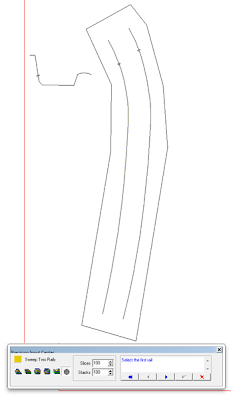Sometimes the files that appear real simple have a lot of steps. Our address sign for the new house was such a piece. It was to be routed from 1.5" 30 lb Precision Board. The address marker would feature the same heart background as the trim.
It started with the vectors - all created in EnRoute Pro. The lettering was a little light for routing so I used the outline tool to add 0.1". I then deleted the original letters.
I then added a border around the letters. The heart vectors were hand placed in a random pattern.
The outer shape was created as a flat relief 0.7" tall.
I then imported a sandblasted woodgrain bitmap and applied it to the base relief at 0.2"
The inner vector was also made into a flat relief 0'4" tall.
The hearts would be raised from the background in three layers. I selected the hearts for the first layer one at a time by picking hearts that did not overlap. They were made into flat reliefs reliefs. By leaving them selected when I did the merge they would be easy to locate and delete when we were done with them.
To do the merge I first selected the outline as the base relief.
Then the heart reliefs were selected one at a time and merged to the base relief. I then deleted them before moving on the the next layer.
These steps were repeated two more times for two more heart layers.
When the heart layer was complete it looked like this.
I then merged the heart layer to the base layer using the replace command.
The lettering border was next. The reliefs were created as flat reliefs. I merged (highest) these reliefs to the base relief.
The numbers were added to the relief using the bevel tool. The base (straight up portion of the letters) was set at 0.2" high.
The file was now ready for tool pathing and then sent off to the MultiCam. It will be roughed with a 3/8" ball nose bit and then routed using a 1/8" ball nose bit with an 80% overlap.
I'll be showing some pics when this gets to the router in a day or two and then off to the paint department. Stay tuned...
-dan





























































